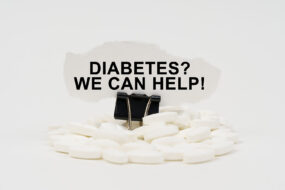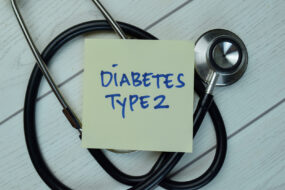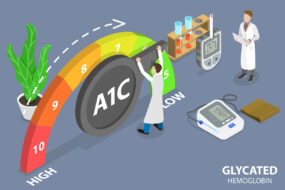
Table of Contents
How to Reverse Prediabetes
High blood sugar levels are a symptom of prediabetes. The condition is associated with a higher risk of type 2 diabetes. It can be reversed, however, with the right lifestyle changes. This article will discuss the symptoms, Hemoglobin A1C test, and lifestyle factors to take into account. Here are some tips to reverse prediabetes:
Increased risk of developing type 2 diabetes
If you have prediabetes, your blood sugars are higher than they normally should be. This condition is a precursor to type 2 diabetes and can lead to heart disease, stroke, and other problems. Although prediabetes is a non-curable condition, you can reduce the risk of type 2 diabetes by getting your blood glucose levels checked. This can be done fasting or non-fasting.
A blood test called HbA1c measures average blood glucose levels over the last two to three months. An increased HbA1c level increases the risk of type 2 diabetes. If you're concerned about the increased risk of diabetes, you can take the Know Your Risk quiz. It takes just a few minutes to complete. If you're at risk, you may be eligible for the free NHS Diabetes Prevention Program or a Health Check.
To reduce the risk of type 2 diabetes, you can make changes to your diet and physical activity. Exercise daily, eat more fiber-rich foods and cut back on sugary foods. Your doctor may prescribe medications or dietary supplements to lower your risk. Before you take a supplement, you should consult your doctor, since some may interact with other medicines. Also, make sure you're not allergic to any of the supplements.
Other risk factors for prediabetes include being overweight or obese. Large waist sizes and fatty tissue indicate insulin resistance. Men and women with a waist circumference over 40 inches are at a greater risk for insulin resistance. Obesity, smoking, and a family history of diabetes are also risk factors. Even if you have no risk factors, you should get your blood sugar checked every year to ensure you're in good health.
Reversal of prediabetes by changing lifestyle factors
Prediabetes is a condition in which a person has an increased risk of developing type 2 diabetes. However, reversing this condition can be done by changing lifestyle factors. People with prediabetes should follow a low-glycemic diet. Refined carbohydrates are very high in glycemic index and are rapidly digested in the gastrointestinal tract. Whole wheat products are healthier options but most baked goods and other processed foods contain added sugar. Refined carbohydrates, including refined grains, are high in empty calories.
While prediabetes does not have a standard worldwide, many people with the condition do have higher levels of insulin than they should. The good news is that reversing prediabetes is possible by making lifestyle changes that will keep glucose levels under control. For instance, if you exercise less than three times a week, you will be less likely to develop type 2 diabetes. You can also change your diet and reduce your sodium intake.
Losing five to ten percent of body weight can improve blood sugar levels and reverse prediabetes. A bigger waist circumference increases insulin resistance, so it is important to lose fat. People with a waist circumference of 35-40 inches should lose five to ten pounds. The CDC recommends that people who have prediabetes lose between five and seven percent of their body weight, which is equivalent to ten to fifteen pounds. Losing a few inches may also help preserve the beta cells, which are the highly specialized pancreatic cells that produce insulin.
In addition to avoiding sugary foods, people with prediabetes should exercise regularly. Getting regular exercise and quitting smoking will also help lower blood sugar and reverse the condition. This is a major step to reverse prediabetes. Changing lifestyle factors is easier said than done, and it is worth putting some thought into it. But remember that losing weight and reducing alcohol consumption are important if you want to reverse prediabetes.
Hemoglobin A1C test for prediabetes
Hemoglobin A1C is a measure of glucose levels in the blood. Some people have higher or lower levels of this blood protein than others. These variations do not increase the risk of developing diabetes, but they can affect A1c results. Different labs use different methods to detect these variations. People with hemoglobin C, D, or E are most likely to have these variants.
The A1C test results show the average blood glucose levels over the past three months. It is not accurate on any given day, but it does reveal effective blood sugar control over time. The results are displayed as a percentage, and the higher the number, the higher the blood glucose level. A normal A1C level is less than 5.6%, but a higher number means you have diabetes.
Your healthcare provider will determine how often you need to repeat the test. You may need to repeat it more frequently if your treatment plan changes or if your A1C is high. This test is not fasting-based, so you can get it before or after eating. It is important to note that other conditions that affect hemoglobin can alter the results. If you have high cholesterol, liver disease, or kidney disease, these conditions can affect the results.
The A1C test represents the average blood glucose levels over the last 3 months. However, it does not reflect the blood glucose level at the time of the lab draw. Because it is a blood glucose test, it is an excellent tool for identifying diabetes or prediabetes. But how do you interpret the results? It depends on the purpose of the test. Your doctor will evaluate your blood glucose levels by interpreting the results.
Treatment options
As of 2011, 57 million adults in the U.S. have prediabetes, a condition with high risk factors for diabetes. Early detection of prediabetes is vital to preventing full-blown diabetes and its complications. According to Dr. Glenn Matfin, clinical associate professor of medicine at New York University and a senior staff physician at Joslin Diabetes Center, lifestyle changes, genetics, and treatment practices all influence the progression from prediabetes to diabetes.
Lifestyle modifications are the most effective way to treat prediabetes. A diet that is rich in fat, proteins, and vegetables may help reverse the condition. Intermittent fasting is another effective treatment option, where you fast for fourteen to sixteen hours. In this way, your body will be induced into a starvation state, thereby reverse insulin resistance. This may also be used as a preventive measure.
Lifestyle changes alone can reduce blood glucose levels, but a combination of dietary and lifestyle changes is an effective treatment option. In addition to lifestyle changes, medications like metformin are also available, though some of these medications can interact with other treatments. If lifestyle modifications fail to control blood sugar levels, alternative therapies should be considered. You should also know which alternative therapies interact with prescription medications. However, it is best to consult a physician before choosing any particular treatment for prediabetes.
Among the most effective treatment options for prediabetes are lifestyle changes and medications. Lifestyle changes, if followed, can reduce the risk of developing type 2 diabetes by up to five to ten percent. The American Diabetes Association recommends losing five to 10 percent of body weight and engaging in 150 minutes of moderate physical activity each week. Lifestyle interventions, like diet and exercise, may provide longer-term benefits than drug therapies and do not have the same side effects










